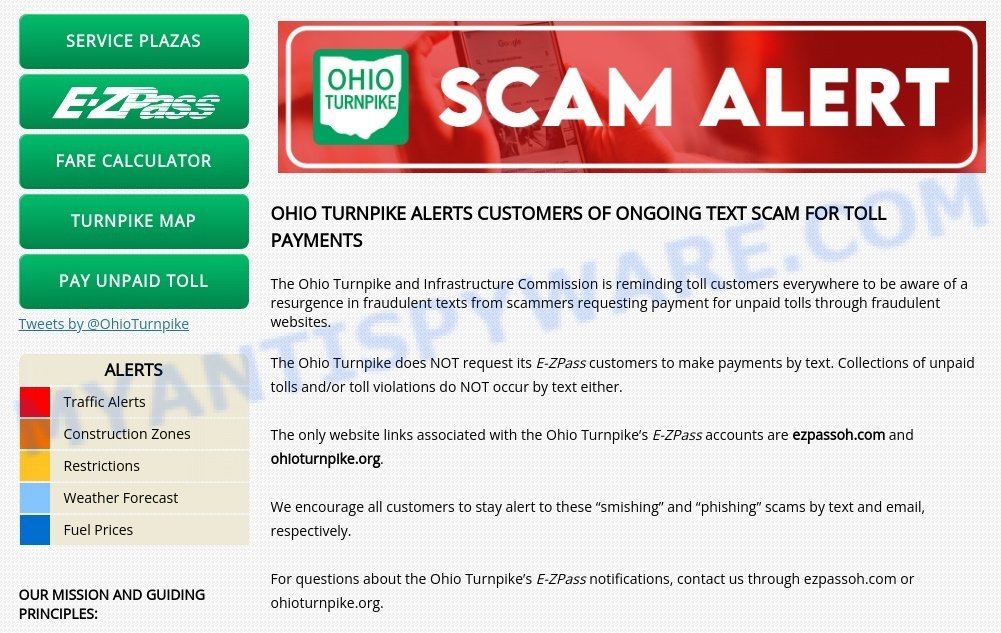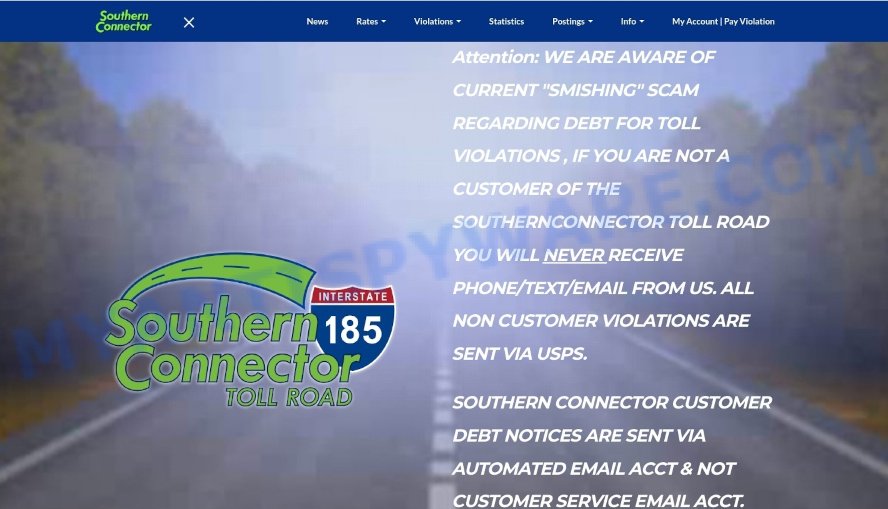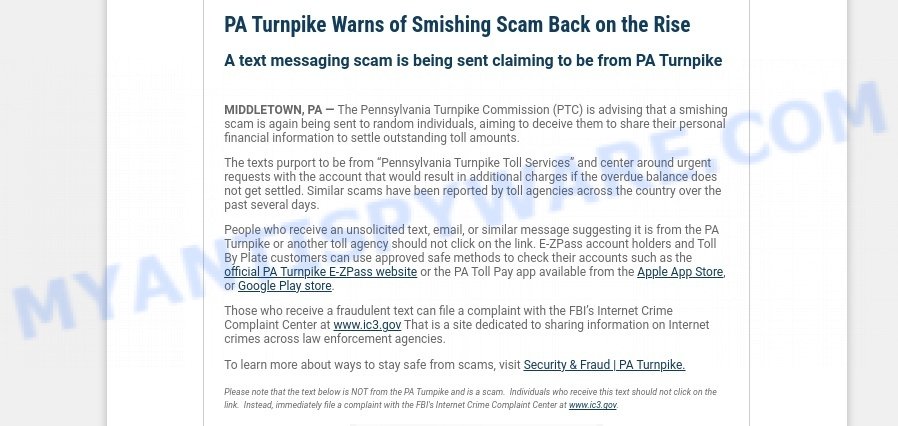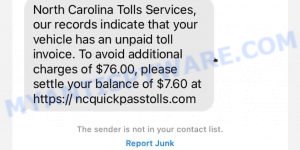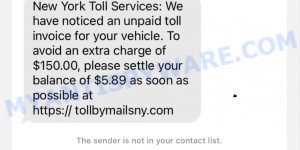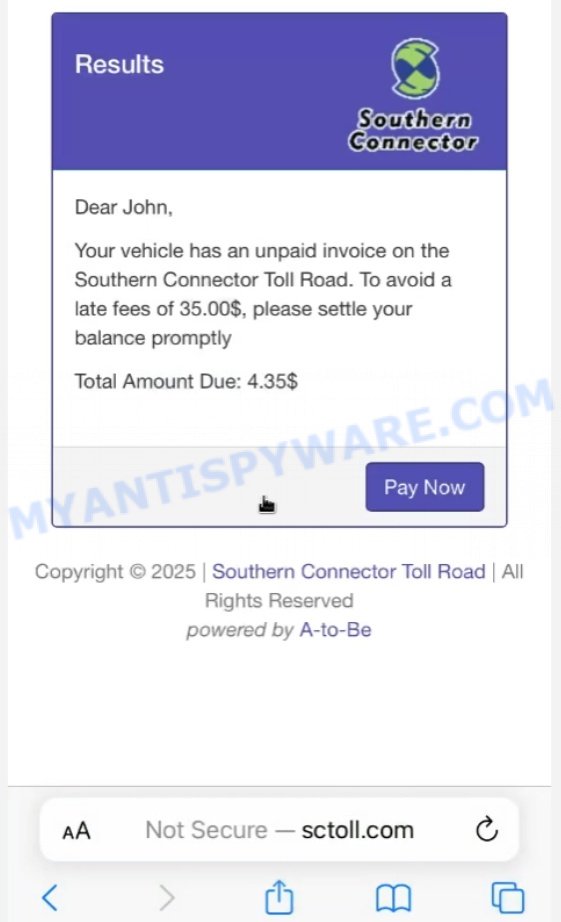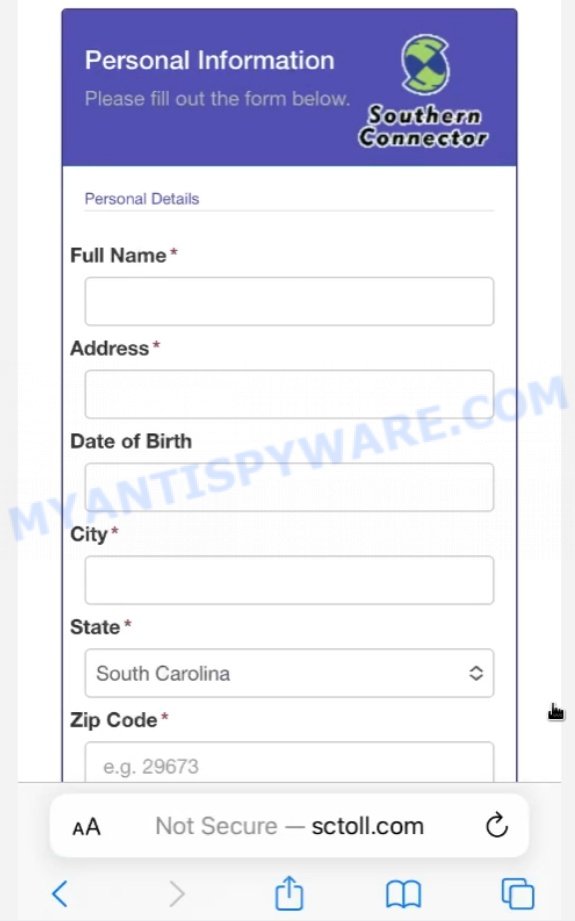Have you received a text claiming to be from the “Southern Connector” about an unpaid parking invoice of $4.35, asking you to visit sctoll.com to pay it?
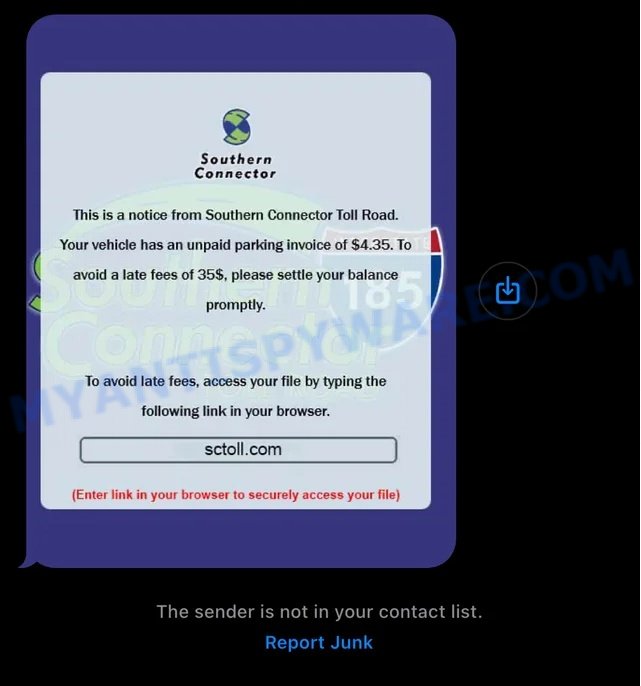
Question: Is this message and link from a real and trustworthy toll service?
Investigation Findings: The text uses a URL, “sctoll.com”, which doesn’t seem to belong to any real toll road service. Scammers often create similar-looking websites. The urgent tone asking for immediate payment and the small invoice amount are typical scam tactics. Also, the message contains errors that hint at it not being professionally crafted.
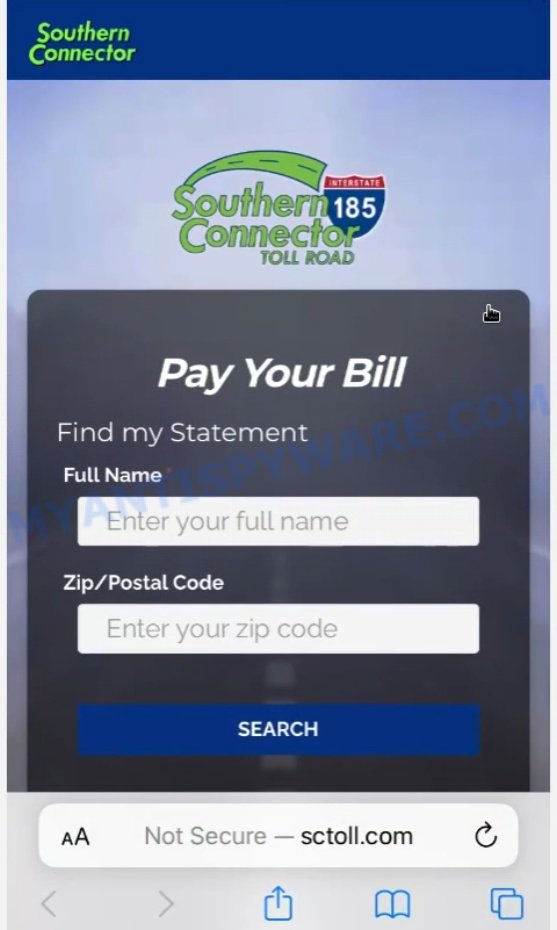
Answer: The Southern Connector Unpaid Parking Invoice Text is a fraudulent message. 💡 To protect yourself from scams like this, always check the legitimacy of claims before taking action. Avoid clicking on unknown links in texts or emails. If in doubt, contact the toll service directly using contact details from their official website.
Table of Contents
🚨 Is the Sctoll.com Text Message a Scam?
Yes, the text message directing you to Sctoll.com and claiming you have an unpaid toll is a scam. 🚫 If you’ve received a Sctoll.com text message claiming you owe toll money and urging you to visit Sctoll.com (or a similarly named site) to avoid extra fees, proceed with extreme caution. These claims are false and designed to exploit your fear and urgency to trick you into entering personal and payment information on a phishing site.
Background on the Sctoll.com Scam:
This type of scam, commonly known as “smishing” (a blend of SMS and phishing), involves criminals posing as legitimate tolling authorities such as the ‘Southern Connector Toll Road’ system. The scammers send text messages demanding payment for supposed unpaid tolls, directing victims to fraudulent websites through the links provided in the messages.
However, ‘Southern Connector Toll Road’ and other legitimate toll agencies have confirmed they do not request toll payments or address toll violations via text message. Official communications regarding toll payments will direct users to their respective authorized websites and not through any unsolicited links sent via SMS.
The concerning rise of these scams has led various government and consumer protection organizations, including the FBI, to issue alerts. These scams have affected numerous states, employing similar methods to deceive individuals in Virginia, Ohio, Florida, California, Pennsylvania, Washington, Illinois, and beyond.
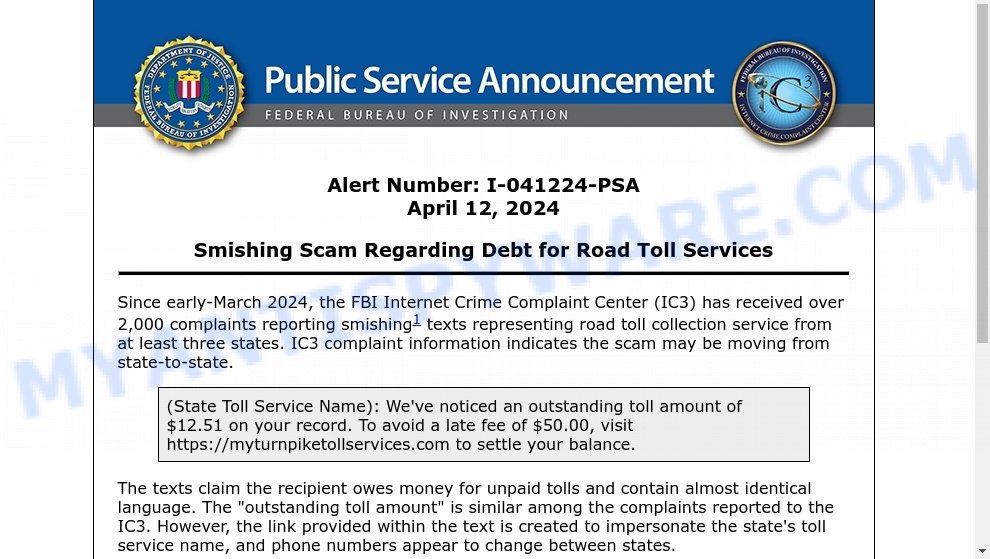
The deceptive messages typically claim there is an “unpaid toll invoice” and direct victims to a phishing website that resembles the official state toll service’s site, but its real purpose is to steal personal and financial information.
🚩 Red Flags to Watch Out For:
Be vigilant and question the authenticity of such text messages if you encounter these warning signs. 🔍🛡️
- 📧 Unsolicited Requests: Texts that come out of nowhere, claiming you owe money for tolls, especially from a source you don’t recognize.
- 🔗 Links to Unknown Websites: The scam text includes a link to a website that is not the official toll payment site, such as the fraudulent Sctoll.com.
- ⏳ Urgency and Deadlines: The text imposes a tight deadline to coerce you into acting hastily out of fear of penalties, pushing you to resolve a supposed issue immediately.
- 💳 Requests for Personal and Financial Information: Be skeptical of any demands to enter sensitive information on a website linked from a text message, as legitimate agencies handle such matters through secure, official channels.
- 👤 Anonymity of the Sender: Scammers often use untraceable numbers or random letter strings as sender ID, making it difficult to verify their authenticity.
- 🔄 No Proof of Debt: Legitimate toll violations would be accompanied by official documentation, not just a text message, and would provide a clear path for verification and dispute.
🕵️♂️ How the Sctoll.com Scam works
The Sctoll.com scam is a phishing scheme designed to steal your personal and financial information by convincing you that you owe toll payments. Being aware of how this scam operates is crucial for your safety. 💡🔐
🚨 Playing on Your Fears
This scam starts with a fake text message telling you about a toll fee you supposedly owe. It plays on your worries about owing money and the fear of extra fees, leading you to follow their instructions without doubting them.
🔗 Fake Claims of Toll Violations
The scam message includes a link to a fake website that looks like a real toll payment service. This site is set up to look trustworthy to trick you into giving away your information.
🎭 Made-up Charges and Pressure
When you visit the fake site, you’ll see a charge you supposedly owe, usually a small amount to make the scam seem more realistic. They push you to pay this amount quickly to avoid more fees.
📥 Asking for Your Payment Information
The site requests your credit card information to “settle” the made-up toll fee. This tactic is used because it’s a straightforward way to access your money and personal details.
🔄 False Sense of Urgency
The scammers create a fake emergency, making you think you need to act quickly to fix a problem that doesn’t actually exist. They pretend to have the authority, and that you need to pay them to avoid further issues.
🕳️ Threats and Tricks
The scam involves deceiving you into believing you’re sorting out a legitimate issue by entering your payment details. They might also hint at additional penalties if you delay, using fear to coerce you into acting quickly.
By understanding these tactics, you can protect yourself from this and similar scams. Always verify claims through official channels and never share personal or financial information on suspicious websites.
Steps to Take if You Receive a Toll Payment Scam Text
Receiving a scam text claiming you owe a toll payment can be alarming. However, there are straightforward actions you can take to safeguard yourself.
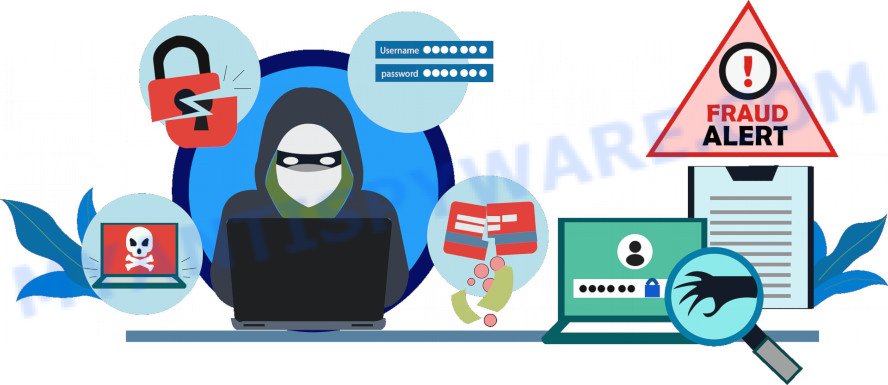
Action Guide Against Toll Payment Scam Texts:
Firstly, keep calm. The scam message wants to rush you into making a mistake by paying or providing personal information. Recognize it for what it is: a common fraud attempt.
Do not send any money. Paying the scammer won’t solve anything. It only puts you at risk of losing money and encourages the scammer to target you again.
Don’t reply. Interacting with the scammer in any way can reveal more about you and confirm that your phone number is active, inviting more fraudulent messages.
If the scam text mentions specific details, like a password or personal info, investigate its origin. Check if your data has been part of a leak by using sites like haveibeenpwned.com.
Next, update your passwords. Create strong, unique passwords for each of your accounts and activate two-factor authentication wherever possible for added security.
Check your device for safety. Run a scan with reliable security software to ensure your phone or computer hasn’t been compromised by malware.
Report the scam text. Inform authorities such as the FTC or your local cybercrime unit. Your report can help prevent future scams.
Lastly, inform your network. Sharing information about this scam with friends, family, and colleagues increases awareness, making it less likely for others to fall victim.
📌 How to Report Sctoll.com Scam Texts
If you get a Sctoll.com text message saying you owe toll fees, it’s a scam. Reporting it can help you stay safe and protect others. Here’s the simple way to report these scam texts:

🔍 Spot the Scam Text
Find the text message that seems like a scam.
👉 Use Your Phone to Report
Your phone lets you report a text as spam or scam. Press and hold the scam message to do this.
🚩 Pick the Report Option
Select the right option to report the message. This could be “Report Spam” or something similar.
📱 Tell Your Mobile Company
Send the scam text to 7726. This spells “SPAM”, and it lets your mobile company know about the scam.
🔗 Tell the Authorities
Some places let you report scam texts to the government or groups that protect consumers. Look online to find out where you can report in your area.
🛡️ What to Do Next
If you clicked on the link in the scam text, watch your accounts for any strange activity. Think about changing your passwords. You might also want to tell your bank or credit card company about the scam.
✔️ Finish Reporting
Make sure you follow all the steps your phone, mobile company, or local government asks you to complete the report.
Threat Summary
| Name | Sctoll.com, Sctoll.com Scam, Southern Connector Tolls Text Scam |
| Type | Phishing |
| Scam Text Content | Southern Connector This is a notice from Southern Connector Toll Road. Your vehicle has an unpaid parking invoice of $4.35. To avoid a late fees of 35$, please settle your balance promptly. To avoid late fees, access your file by typing the following link in your browser. sctoll.com (Enter link in your browser to securely access your file) Results |
| Fake Fee | Extra fees (implied) |
| Targeted Information | Full name, address, phone number, credit card details (number, CVV, expiration date) |
| Harm | Loss of money, identity theft risk |
| How It Spreads | Mass text messaging to random or targeted phone numbers |
| Scammer’s Methods | Creating urgency, pretending to be a legitimate toll payment service |
| Variations | Different amounts claimed, various phishing website URLs |
| Protection Tips | Don’t click on links in unsolicited texts; confirm any toll charges directly through official websites; use strong passwords; enable two-factor authentication for online accounts; educate yourself on phishing signs |
| What To Do If You Receive A Scam Text | Don’t use the link in the text; verify any claims through the official site; report the scam to your mobile carrier; monitor your financial statements regularly |
| Reporting Info | Report the text to your mobile carrier by forwarding it to 7726; inform local or national consumer protection agencies; share information about the scam to warn others |
| Whois | Domain Name: SCTOLL.COM Registrant Information Registrant Organization: REDACTED FOR PRIVACY Registrant Country: US Registration Dates Creation Date: 2024-12-26 Registry Expiry Date: 2025-12-26 Technical Information Name Server: NS1.VIP-DNS90.COM Registrar Details Registrar: NICENIC INTERNATIONAL GROUP CO., LIMITED |
😱 What to Do If You Clicked on a Scam Link
If you accidentally interacted with a text from the Sctoll.com scam, it’s crucial not to panic. Follow these steps to safeguard your personal and financial information effectively.

🔐 Immediate Password Change
Immediately change the passwords for any accounts that you fear may be compromised. This includes your financial accounts, email, and any other sensitive accounts, especially if you have used similar passwords.
👀 Monitor Financial and Credit Reports
Closely monitor your bank accounts and credit reports for any unusual activities. Scammers might use your personal information to commit identity theft or unauthorized transactions.
📞 Contact Your Financial Institutions
Get in touch with your bank and credit card companies. Inform them about the scam and any actions you may have taken after interacting with the message. They can offer specific advice to secure your accounts.
🔒 Enable Two-Factor Authentication
Activate two-factor authentication for your sensitive accounts. This adds an extra layer of security, safeguarding your accounts even if scammers have obtained some of your credentials.
🚫🔗 Inform Your Contacts
Warn your friends, family, and network about the scam. Advise them to be cautious of similar messages and not to trust unsolicited texts or links, especially those claiming to be from financial institutions.
📝 Document the Scam
Record evidence of the scam, such as screenshots of the message and any interactions you had. This documentation can be useful if you need to report the incident or for future reference in case of any disputes or investigations.
👮♀️ Report to Cybersecurity Authorities
Consider reporting the incident to local cybersecurity or law enforcement authorities. While online scams are common, reporting them can contribute to broader efforts to combat such malicious activities.
📘 Stay Informed and Educated
Regularly update yourself on the latest online scams. Staying informed helps you recognize and avoid falling victim to similar tactics in the future.
🎯 Conclusion
The Southern Connector Unpaid Parking Invoice text message is a phishing scam. The fraudsters behind this scam try to scare you into paying fake fees by sending messages that look like they’re from Southern Connector Toll Road, a real toll service. What is their goal? To trick you into clicking on harmful links that lead to fake websites designed to steal your personal and financial information. Falling for this scam can lead to the loss of important data, more scams aimed at you, and possible money loss.
It’s important to understand that real alerts about toll fees or money matters usually come from the actual service providers or your bank, not through unsolicited texts with suspicious links. If you get an unexpected message about toll fees or any money-related issue, it’s key to check if it’s real by contacting the service directly or going to their official website on your own.
Avoid clicking on links in text messages, and tell your friends and family about these scams. Frequently changing your passwords and adding extra security steps like two-factor authentication can greatly improve your online safety. 🛡️
